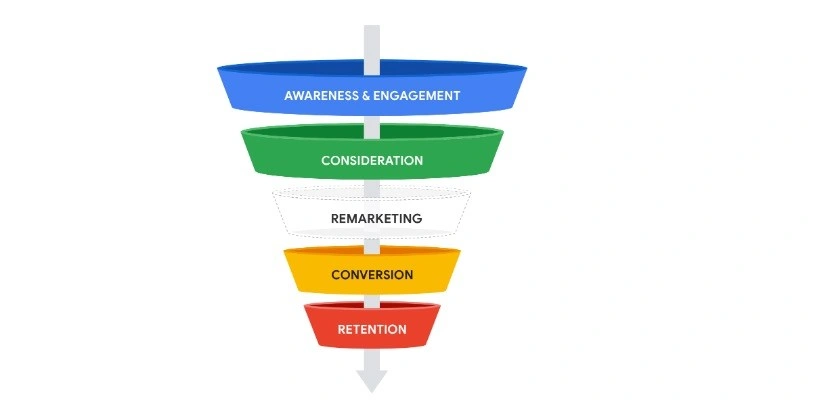Why Stories Win: Effective Brand Storytelling for Marketers

Breaking through the noise of modern marketing demands more than promotion; it requires the engaging power of brand stories. Storytelling has emerged as perhaps the most potent tool in the savvy marketer's arsenal - a bridge between brand and consumer that transcends traditional promotional tactics. This article explores the multifaceted nature of storytelling in marketing and how businesses can harness its power to create lasting impressions and drive engagement.
The Foundations of Brand Storytelling
At its core, storytelling in marketing taps into fundamental human psychology. For millennia, humans have used narratives to make sense of the world, share knowledge, and forge communal bonds. When brands tell stories, they're engaging with this deeply rooted cognitive framework, creating emotional connections that factual advertising simply cannot match.
The narratives can trigger the release of oxytocin, often called the "trust hormone," creating positive associations with the storyteller - in this case, the brand. This neurological response explains why consumers are 22 times more likely to remember facts when presented within a narrative context rather than as standalone information.
Traditional marketing approaches focused predominantly on features and benefits, whereas story-driven marketing prioritises creating an emotional journey. This shift represents a fundamental change in how brands communicate - moving from "telling and selling" to "engaging and inspiring."
The elements of effective brand storytelling include:
- A clear narrative arc with a beginning, middle, and end
- Relatable characters that embody your audience or brand
- Authentic conflict or challenges that resonate with consumers
- Resolution that positions your product or service naturally
- Value alignment between the narrative and your brand ethos

Core Story Frameworks for Marketing Success
Several proven narrative structures provide solid foundations for marketing storytelling:
- The Hero's Journey, popularised by Joseph Campbell, presents a versatile framework where customers can be positioned as heroes, with your brand serving as the guide that helps them overcome challenges. Fitness brands like Gymshark effectively employ this structure in their marketing, positioning customers as heroes on transformative journeys.
- The Before-After-Bridge framework presents a situation before your product or service (problem), envisions life after your solution (benefit), and bridges between these states (how your offering creates transformation). This straightforward approach works particularly well in direct response marketing.
- Problem-Agitate-Solve begins by identifying a customer pain point, amplifying the emotional impact of this problem, and then presenting your solution as the remedy. This framework aligns perfectly with services that address specific challenges.
- Origin stories detail how and why a brand came into existence, often highlighting the founder's journey or the problem that inspired the company's creation. Innocent Smoothies masterfully employs this approach, sharing how their founders started selling smoothies at a music festival, using a simple "yes/no" bin for customers to decide if they should quit their jobs to launch the business.
Each framework serves different objectives, but all successful marketing narratives share a common thread: they place customer needs and experiences at their heart rather than focusing solely on the brand.
Developing Your Brand's Narrative
Creating an effective brand story begins with introspection. Organisations must:
- Identify core values and purpose beyond profit
- Uncover existing stories within the organisation
- Define their unique voice and perspective
- Create authentic character representations
- Develop a coherent narrative arc that evolves with the brand
Story mining - the process of uncovering narratives that already exist within your organisation - often reveals compelling material. This might include founder stories, employee experiences, customer transformations, or product development journeys. These authentic narratives provide raw material that can be crafted into marketing communications.
Ensuring cross-departmental alignment on brand storytelling is crucial. When marketing, customer service, product development, and leadership all understand and contribute to the overarching narrative, the result is a consistent, reinforced brand story that resonates through every customer touchpoint.
.webp)
Adapting Stories Across Marketing Channels
Effective storytelling adapts to the unique characteristics of different marketing channels while maintaining narrative consistency:
- Social media platforms require concise, visually impactful storytelling. Instagram and Pinterest favour strong imagery with minimal text, while Twitter demands punchy narratives within strict character limits. Facebook allows more elaborate storytelling with mixed media.
- Video platforms like YouTube and TikTok enable brands to create emotional connections through visual storytelling, though with different time constraints and audience expectations - YouTube accommodating longer-form content while TikTok demands immediate impact.
- Email marketing permits sequential storytelling, revealing narrative elements over time through carefully crafted campaigns that nurture prospects through the customer journey.
- Blog content and articles allow for deeper exploration of narrative elements, ideal for thought leadership and educational content that positions your brand within a larger story context.
The most successful brands maintain narrative cohesion across these channels while optimising for each platform's unique characteristics. Burberry exemplifies this approach, creating immersive storytelling experiences that span social media, video, retail environments, and digital platforms while maintaining its distinctive British luxury narrative.
Visual Elements That Enhance Marketing Stories
Visual components often communicate more immediately and emotionally than text alone:
- Colour psychology plays a significant role in visual storytelling - blue communicates trust and stability, red evokes passion or urgency, and green suggests growth or environmental consciousness. Consistently applied colour schemes become shorthand for brand values and personality.
- Typography choices convey tone and character - serif fonts often communicate tradition and respectability, while sans serif fonts project modernity and accessibility. The consistency of typography across storytelling assets builds recognition and reinforces brand identity.
- Photography style establishes emotional context - warm filters creating intimacy, high-contrast imagery conveying drama, candid shots suggesting authenticity. Brands like Airbnb have created distinctive visual narratives through consistent, authentic photography that emphasises human connection and unique experiences.
Visual storytelling elements should not merely decorate but actively advance the narrative, creating immediate emotional impact that complements and enhances textual elements.
Leveraging Data for Storytelling Impact
Modern marketing storytelling increasingly relies on data to inform narrative development and measure effectiveness:
- Customer data helps create more relevant, personalised stories by revealing audience preferences, behaviours, and pain points. These insights enable marketers to craft narratives that resonate more deeply with specific segments.
- A/B testing allows for empirical comparison between different narrative approaches, helping brands refine storytelling elements based on audience response rather than subjective judgment.
- Analytics tools measure engagement with story content across platforms, providing insights into which narrative elements generate the strongest emotional and behavioural responses.
The challenge lies in balancing data-driven insights with creative intuition. The most effective marketing storytellers use data to inform narrative development without allowing metrics to override the human elements that make stories compelling.
Marks & Spencer's data-informed "Food Porn" campaign exemplifies this balance, using customer insights to develop sensory storytelling that appeals to specific audience segments while maintaining creative excellence.
Community Engagement Through Collaborative Storytelling
User-generated content represents a powerful evolution in marketing storytelling, shifting from brand monologue to community dialogue:
- Customer story platforms invite audiences to share experiences related to your brand, creating authentic content that resonates with prospects.
- Co-creation initiatives involve customers in developing brand narratives, fostering deeper engagement and loyalty.
- Social media challenges provide frameworks for customers to create content within brand narrative parameters, generating visibility while reinforcing story elements.
GoPro masterfully employs this approach through their user-generated content strategy, curating and amplifying customer stories that showcase both product capabilities and the adventurous lifestyle associated with their brand.
Effective management of community storytelling requires clear frameworks that guide participation while allowing authentic expression, along with moderation processes that ensure contributions align with brand values and regulatory requirements.
Tailoring Narratives to Marketing Objectives
Different marketing goals require distinct storytelling approaches:
- Awareness campaigns benefit from emotionally resonant, shareable stories that introduce brand values and personality without heavy product focus.
- Conversion-focused narratives typically emphasise transformation stories that position products or services as solutions to specific challenges.
- Loyalty initiatives often leverage customer journey stories and community narratives that reinforce belonging and shared values.
- Crisis management requires transparent storytelling that acknowledges challenges while reinforcing core brand principles and commitment to resolution.
The distinction between B2B and B2C storytelling is increasingly blurring, with both recognising that even in professional contexts, decisions are made by humans responsive to authentic narratives. However, B2B storytelling typically emphasises rational elements like ROI and efficiency alongside emotional appeals, while B2C often leads more strongly with emotional content.
Ethical Considerations in Marketing Storytelling
As storytelling becomes increasingly central to marketing strategy, ethical considerations gain importance:
- Authenticity remains paramount - when narratives are discovered to be fabricated or exaggerated, the resulting backlash can cause significant damage to brand trust.
- Cultural sensitivity requires careful consideration when creating narratives that reference diverse communities or traditions. Thoughtful representation and consultation with relevant communities can help avoid harmful stereotypes or appropriation.
- Purpose-driven storytelling must be supported by genuine organisational commitment rather than serving as a superficial marketing tactic. Consumers increasingly investigate whether brands truly embody the values their stories espouse.
Brands like Patagonia set the standard for ethical storytelling, creating narratives around environmental activism that are thoroughly integrated with business practices, from supply chain decisions to political advocacy.
Developing Narrative-Driven Content Marketing
Content marketing provides fertile ground for extended brand storytelling:
- Story-based content calendars map narrative elements across time and platforms, ensuring cohesive storytelling that builds upon itself.
- Serialised content keeps audiences engaged through ongoing narratives that unfold across multiple interactions.
- Transmedia storytelling extends narratives across different platforms, with each channel contributing unique elements to a comprehensive story world.
Effective narrative-driven content marketing requires careful planning of story arcs that can sustain audience interest over time while remaining flexible enough to respond to changing market conditions and audience feedback.
John Lewis & Partners exemplifies this approach with their annual Christmas advertisements, which have evolved into eagerly anticipated narrative events that extend beyond television into social media, merchandise, and in-store experiences.
.webp)
Industry-Specific Storytelling Approaches
Different sectors employ distinct storytelling strategies to address unique challenges and opportunities:
- Luxury brands often leverage heritage storytelling and craftsmanship narratives to justify premium positioning and build exclusivity. Brands like Burberry use their British heritage as a cornerstone of their storytelling approach.
- Technology companies frequently employ visionary narratives that position their offerings as revolutionary solutions to existing limitations. Apple's storytelling consistently presents its products as transformative tools that enable creativity and innovation.
- Financial services increasingly use human impact stories to humanise abstract products and services. Nationwide Building Society's "Voices" campaign effectively employed poetry and authentic customer stories to differentiate their brand in a traditionally impersonal sector.
- Healthcare organisations balance emotional patient stories with evidence-based credibility to build trust while remaining compliant with regulatory requirements.
Each industry's storytelling approach must address sector-specific customer concerns while differentiating the brand from competitors.
Future Trends in Marketing Storytelling
Several emerging technologies and cultural shifts are reshaping marketing storytelling:
- Immersive technologies like augmented and virtual reality enable audiences to experience narratives rather than merely consume them. These technologies create memorable brand interactions through multisensory storytelling.
- Artificial intelligence is beginning to assist in personalising narratives based on individual preferences and behaviours, creating dynamically adapting stories that respond to user engagement.
- Voice-based interactions through smart speakers and other devices are creating new opportunities for conversational storytelling that integrates naturally into consumers' lives.
- Interactive narratives that respond to user choices allow audiences to co-create their experience, increasing engagement while providing valuable insights into consumer preferences.
Brands that experiment thoughtfully with these emerging storytelling approaches while maintaining narrative authenticity will likely gain a competitive advantage as these technologies become more mainstream.
Case Studies in Effective Marketing Storytelling
Examining successful implementations provides valuable insights for developing effective storytelling strategies:
- Dove's "Real Beauty" campaign transformed the brand by challenging beauty industry conventions through authentic stories of diverse women. This long-running narrative approach increased market share while creating a meaningful cultural impact.
- Guinness's "Made of More" campaign uses powerful emotional storytelling that focuses on character and determination, aligning these qualities with the brand's brewing process and history to create distinctive, memorable marketing that transcends typical category approaches.
- Spotify's "Wrapped" campaign turns user data into personalised retrospective stories, creating shareable content that celebrates individual experiences while showcasing the platform's role in users' lives.
These successful campaigns share common elements: authentic emotional connection, alignment with brand values, and narrative approaches that stand apart from category conventions.
.webp)
Conclusion
The power of storytelling in marketing lies in its ability to transform transactional relationships into emotional connections. By crafting authentic narratives that resonate with audience values and experiences, brands can create meaningful engagement that extends beyond functional benefits to establish lasting loyalty.
As marketing continues to evolve in increasingly digital and fragmented environments, the brands that will thrive are those that recognise storytelling not merely as a tactical approach but as a strategic imperative - a fundamental way of communicating that acknowledges consumers as humans seeking meaning, connection, and authentic engagement.
The most successful brand storytellers balance artistic creativity with strategic purpose, emotional impact with commercial objectives, and consistent narrative with platform-appropriate execution. By doing so, they create marketing that audiences actively seek rather than avoid - content that enriches rather than interrupts the customer experience.
References:
https://www.dove.com/uk/stories/campaigns.html
https://europeanbusinessmagazine.com/business/gymshark-the-fitness-brand-phenomenon/
https://ipa.co.uk/knowledge/case-studies/guinness-an-effectiveness-story-made-of-more
https://www.jcf.org/learn/joseph-campbell-heros-journey
https://www.johnlewis.com/content/gifts/every-john-lewis-christmas-advert-ever-aired
https://www.marketingweek.com/innocent-marketing-excellence-journey/
https://newsroom.spotify.com/2023-11-29/wrapped-design-marketing-brand-creative-inside-spotify/
https://www.patagonia.com/stories/choose-your-own-storytelling/story-18933.html
https://www.scientificamerican.com/article/to-trust-or-not-to-trust/
https://www.thegrocer.co.uk/news/mands-revives-its-famous-food-porn-ad-campaign/592038.article
.avif)



.webp)




